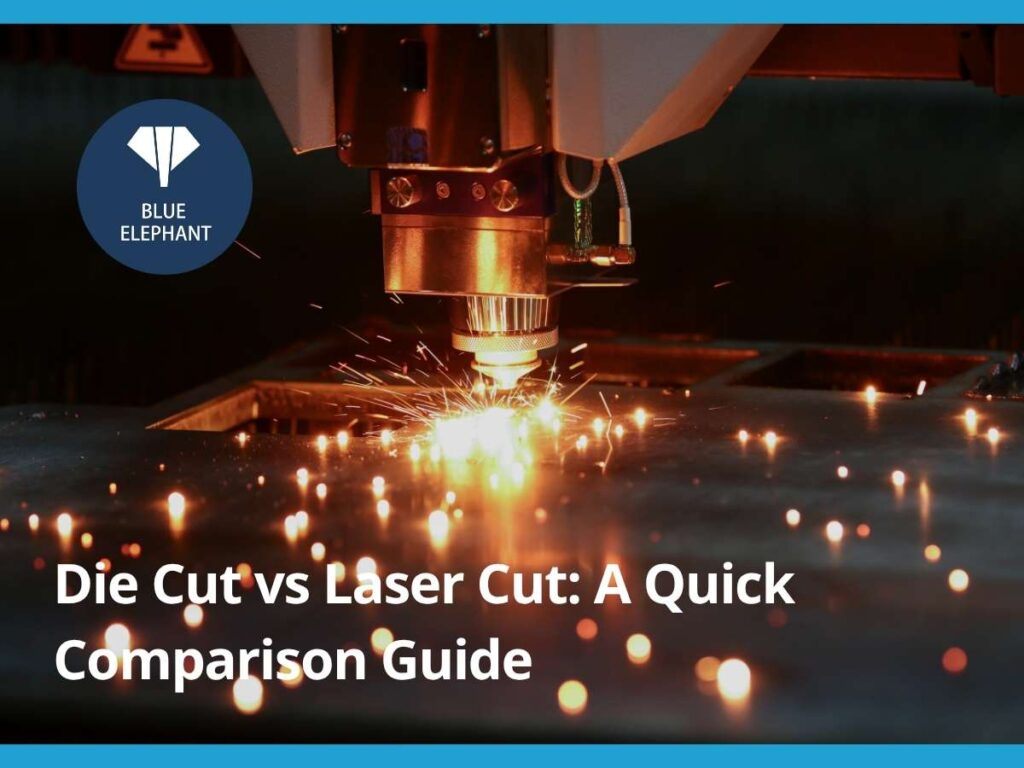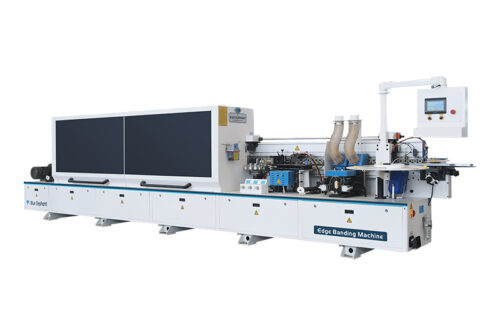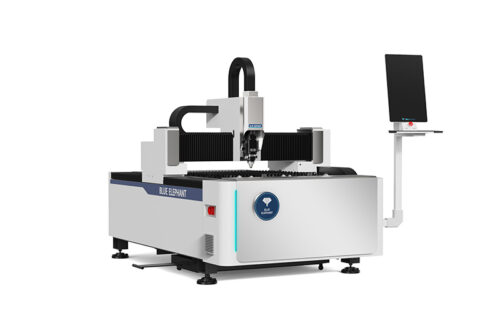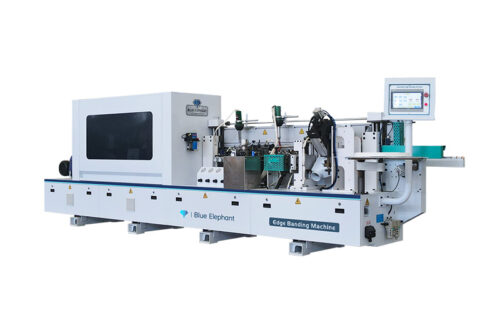I’ve been in your shoes, stuck choosing between die cutting and laser cutting, unsure which one was the better investment. After one costly mistake, I knew I had to get it right the next time.
If you’ve ever had to make a production decision with real dollars on the line, you know how stressful it can be. The last thing you want is to realize too late that you picked the wrong method.
I’ve tested both die cutting and laser cutting across multiple projects, in real-world business settings. This guide isn’t based on theory—it’s built from firsthand experience.
By the end of this article, you’ll know:
- The strengths and weaknesses of each cutting method
- Which option best fits your business needs
- Key factors to consider before making a decision
So, let’s get started!
1. What is Die Cut?
Die cutting is one of the most efficient ways to produce high-volume, precision-cut materials. Whether you’re working with packaging, signage, or industrial components, understanding this method can help optimize your production process.
How Die Cutting Works
Imagine having a tool that can slice through materials with precision, speed, and consistency—over and over again, without fail. That’s die cutting.
At its core, die cutting uses a custom-shaped steel blade (called a “die”) to stamp out shapes, patterns, or designs from materials like paper, cardboard, plastic, or even metal. Think of it like a giant cookie cutter, but for industrial applications. The result? Clean, uniform cuts at high speeds.
For businesses that need mass production with accuracy—packaging, labels, displays, and more—die cutting is a workhorse. It gets the job done efficiently, keeping your production line moving and your costs under control.
Types of Die Cutting
Not all die cutting is the same. Depending on your business needs, you’ll want to choose the right method:
- Flatbed Die Cutting: Best for thick or rigid materials. Uses a hydraulic press to punch out designs, making it ideal for short to medium production runs.
- Rotary Die Cutting: Built for speed. A cylindrical die rotates at high speeds, continuously cutting materials as they pass through. Perfect for high-volume, precision work.
- Digital Die Cutting: No physical dies needed. Instead, it uses a computer-controlled blade or laser, allowing for customization without expensive tooling. Great for prototyping and small runs.
Each method has its strengths. Choosing the right one depends on how fast, flexible, and cost-effective you need your production to be.
Common Applications
Die cutting is everywhere in the business world—whether you notice it or not. If your operations involve packaging, branding, or large-scale production, chances are you’ll need it at some point. Here are some of the most common uses:
- Packaging & Boxes: Custom-shaped boxes, inserts, and product packaging.
- Labels & Stickers: Mass production of adhesive labels with precise edges.
- Signage & Displays: Point-of-sale materials, banners, and promotional cutouts.
- Gaskets & Industrial Components: Non-paper materials like foam, rubber, and plastics for manufacturing.
Pros and Cons of Die Cutting
Like any production method, die cutting comes with its advantages and limitations. Understanding these can help you determine whether it’s the right choice for your needs.
- Pros:
- Fast and Efficient: Once the die is made, production runs are incredibly quick.
- Consistent Quality: Each cut is identical, ensuring uniformity across large batches.
- Cost-Effective for High-Volume Production: The more you produce, the lower the per-unit cost.
- Works on a Variety of Materials: Paper, plastic, metal, and even fabric.
- Cons:
- Upfront Tooling Costs: Custom dies require an initial investment.
- Limited Flexibility: If you need to change the design, you’ll need a new die.
- Not Ideal for Short Runs: If you’re producing a small batch, the setup costs might outweigh the benefits.
2. What is Laser Cut?
Laser cutting is a powerful and precise method used across industries to create intricate designs, sharp edges, and high-quality finishes. Unlike die cutting, which relies on physical blades, laser cutting uses intense heat to slice through materials with absolute precision.
If your business demands detailed cuts, customization, or versatility, laser cutting could be the game-changer you need.
How Laser Cutting Works
Think of laser cutting as an ultra-focused beam of light that vaporizes, melts, or burns through materials, no physical contact, no wear and tear on tools. The process starts with a high-powered laser that is directed by computer-controlled settings, ensuring pinpoint accuracy. Here’s how it works:
- A digital design file is uploaded to the laser cutter.
- The laser beam is focused on the material, heating it to extreme temperatures.
- The heat either vaporizes or melts the material while a high-pressure gas blows away the residue, creating a clean cut.
- The laser moves precisely along the programmed path, forming intricate shapes without the need for dies or molds.
This method is ideal for businesses that require detailed customization, fine edges, and efficient cutting of various materials.
Types of Laser Cutting
Laser cutting isn’t a one-size-fits-all process. Different laser types work better for different materials and applications. Here are the three main types:
- CO2 Laser Cutting: Best for non-metal materials like wood, acrylic, plastics, and textiles. It offers smooth edges and is widely used for signage, packaging, and engraving.
- Fiber Laser Cutting: Highly efficient for metals like stainless steel, aluminum, and brass. It delivers fast, precise cuts and is ideal for industrial applications.
- Nd:YAG Laser Cutting: A specialized laser used for cutting extremely tough materials, such as ceramics and thicker metals. It is often used in aerospace and medical industries.
Choosing the right laser depends on what materials your business works with and how much precision is required.
Common Uses
Laser cutting is widely used across industries that demand accuracy, speed, and clean finishes. If your business requires detailed cutting or complex designs, laser technology is likely the best choice. Here’s where laser cutting is most commonly used:
- Manufacturing & Metal Fabrication: Cutting precise metal parts, enclosures, and industrial components.
- Signage & Branding: Creating intricate logos, lettering, and custom signage.
- Electronics & Automotive: Producing circuit boards, control panels, and intricate vehicle parts.
- Textiles & Fashion: Cutting patterns for clothing, footwear, and accessories.
- Medical & Aerospace: Fabricating high-precision parts for surgical tools and aircraft components.

3. Die Cut vs Laser Cut: Key Difference
Choosing between die cutting and laser cutting isn’t just about cost, it’s about efficiency and long-term scalability. I’ve faced this decision myself, and making the wrong choice can mean wasted materials, missed deadlines, and unnecessary expenses. Below is a side-by-side comparison to help you determine which method best suits your business needs:
| Factor | Die Cut | Laser Cut |
| Cutting Method | Uses a physical steel die to stamp out shapes | Uses a high-powered laser beam to cut materials |
| Precision | High, but may have minor variations in edges | Extremely high, with smooth and precise edges |
| Speed | Faster for mass production | Slower per unit but efficient for complex cuts |
| Setup Costs | Higher due to die creation | Lower setup cost—no physical tooling required |
| Production Costs | Lower for high-volume jobs | Higher per unit, but better for small batches |
| Material Compatibility | Works well with rigid materials like cardboard, plastic, and foam | Works with metals, acrylics, wood, textiles, and more |
| Customization | Limited—new designs require new dies | Unlimited—just update the digital design file |
| Scalability | Best for large-scale production | Ideal for prototyping and low-to-medium runs |
| Environmental Impact | Generates more waste due to material trimming | More efficient use of materials, but energy-intensive |
| Maintenance | Dies can wear out and need replacement | Requires regular lens and machine maintenance |
I learned the hard way that the right choice depends entirely on the project. Early on, I chose die cutting for a low-volume, highly intricate design—only to realize the tooling costs weren’t worth it. On the other hand, I’ve also seen businesses overspend on laser cutting when a simple die-cut solution would have done the job perfectly.
4. 5 Factors to Consider When Choosing Between Die Cut vs Laser Cut
Making the right choice between die cutting and laser cutting isn’t just about technology—it’s about what works best for your business.
I’ve seen companies waste money by choosing the wrong method, either underestimating their production needs or overpaying for capabilities they didn’t require. To avoid costly mistakes, here are the key factors to consider:
#1 Project Type and Complexity
Not all projects require the same level of detail. If you need simple, repeatable cuts for high-volume production—think packaging, labels, or industrial components—die cutting is the better option. But if your design involves intricate patterns, fine details, or custom shapes, laser cutting gives you unmatched precision without the need for expensive dies.
#2 Production Volume
Die cutting is built for speed and efficiency when handling large orders. Once the die is made, you can produce thousands—even millions—of identical cuts quickly and at a low cost per unit.
Laser cutting, however, is better suited for low-to-medium production runs, where customization is key. Since there are no physical dies involved, switching designs is as simple as updating a digital file.
#3 Budget Constraints
Your budget isn’t just about upfront costs—it’s about long-term savings. Die cutting requires an initial investment in tooling, but once the die is created, large-scale production is extremely cost-effective. Laser cutting has a lower setup cost since it doesn’t require tooling, but the per-unit cost is typically higher.
If you’re working on a one-time project or small batch production, laser cutting might be the more economical choice. If your business requires mass production, die cutting will save you money in the long run.
#4 Material Choice
The type of material you’re working with will play a big role in your decision.
- Die Cutting: Works best with materials like paper, cardboard, rubber, foam, and plastics. It can also handle rigid materials that require a strong physical cut.
- Laser Cutting: It is more versatile and can cut through materials like metals, acrylics, wood, and textiles with extreme precision. However, some materials (like PVC) release harmful fumes when laser-cut, which requires additional safety measures.
#5 Customization Needs
If you frequently update designs or require variations in your cuts, laser cutting is the clear winner. No need to purchase new dies—just modify your digital file and cut. This makes laser cutting ideal for prototyping, short-run productions, or businesses that need frequent design changes.
Die cutting, on the other hand, is ideal for standardized production. Once the die is created, you’re locked into that design—making it efficient for large-scale, repetitive cuts but costly if changes are needed.
Conclusion
I’ve made the mistake of choosing the wrong cutting method before, and I know how frustrating (and expensive) it can be. That’s why I laid it all out for you—so you can make an informed decision.
If you need high-volume, consistent production, die-cutting is the way to go. But if precision, flexibility, and customization are your top priorities, laser cutting wins.
Now it’s your turn. Which one fits your business best? Let’s figure it out together.
Contact us today, we’ll make sure you get it right the first time.
Check Out These Additional Resources
We’ve gathered a few more articles that could help you out. Check them out for more great advice:
Still haven’t found what you’re looking for? Don’t hesitate to contact us. We’re available around the clock to assist you.













